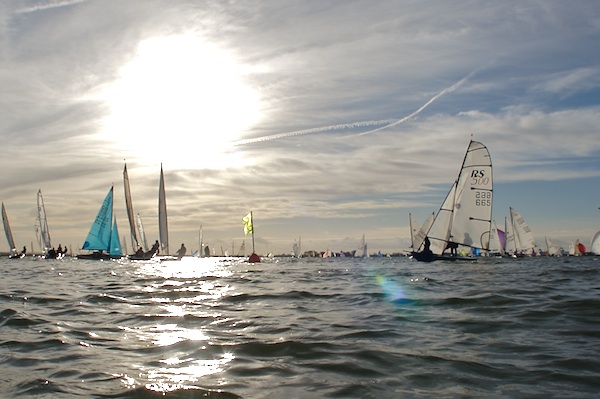
© www.ianroman.com: The Bloody Mary Pursuit Race
The secret to handicap racing is not to take it too seriously. No one, not even the RYA's Technical Unit, which administers the Portsmouth Yardstick Scheme, claims that handicapping of different boats is a perfect science. So take your victories with good grace and don't get too disheartened by your defeats.
One-design racing is the only true measure of sailing prowess, but if you spend most of your sailing doing club races, then doubtless you will be spending much of your time racing under handicap. So it is only understandable that you will want to know how to get the best out of the system. Indeed, some sailors even choose their boat according to its perceived performance under handicap. Now, that's what you call pot hunting...
And for the big events such as the Bloody Mary, some sailors have been known to turn up with a selection of boats that are known to perform well under different ends of the wind range. A double-trailer with an Enterprise and 420, for example, would be an excellent each-way bet for a light or windy day. And a Fireball would be a good all-round bet for a range of conditions.
Two often quoted complaints overheard at sailing club bars around the country are that the Fireball seems to perform rather too well under its handicap of 982 throughout the wind range, whereas the Laser seems never to get a look-in under any conditions. Certainly, it is easy to think of many Fireball victories at some of the handicap major events, such as the Bloody Mary, Grafham Grand Prix, Hoo Freezer and so on. It's hard to think of one victory by a Laser in these events.
But unless you subscribe to some extreme conspiracy theory that all Fireball sailors ‘sandbag' - ie sail below their best - at club events throughout the year so as to drag down their Portsmouth Yardstick (PY) Number on purpose, then you have to accept that the PY Scheme is about as fair as it could be.
The Scheme is administered by the RYA, who receive Yardstick Returns from sailing clubs around the country. These Return forms require sailing clubs to fill out details of how boats have performed under their respective PY Numbers. When the RYA receives all these forms, with the closing date each year of 30 September, they can plug them into their database and let the number crunching begin. Those new numbers are then published at Sailboat, the annual exhibition held on the first weekend of March at Alexandra Palace in North London. This provides a good opportunity for the RYA to disseminate and explain any changes to all the class representatives who are gathered there.
If the combined returns from all the different clubs reveal a particular class of boat to be overperforming or underperforming on a consistent basis, then the RYA will consider altering that class's PY number to be more reflective of its actual performance in club racing that year. This system relies on two factors to work effectively:
1. a large number of boats of the same class racing on a regular basis at many different types of venue
2. a large number of returns filed from a range of clubs around the country.
To deal with the second point first, Kath O'Connell of the RYA says they currently receive returns from around 200 clubs each year. "We would like three times that number, if possible, but some clubs don't bother sending in returns at all," she points out. If you don't think your handicap is fair, then make sure your club is sending in its returns. You never know, it might just make the difference that can get your handicap rerated to where you think it should be.
Rarity value
The other factor, point 1 above, means we can trust the PY numbers of popular, well-established classes to be reasonably accurate. But the newer or less popular classes are harder to gauge under this system. The Thames A Raters are case in point. These 30-foot, tall-rigged boats tend to race amongst themselves all year, either at Surbiton on the Thames, or further up the same river at Bourne End in Buckinghamshire. So when they make their occasional appearance at the Bloody Mary, they are very hard to benchmark against the other classes. The same goes for the 18-foot skiffs, which are few in number and only capable of being sailed at a handful of clubs around the country. In fact neither the A Rater nor the 18 have an official number under the scheme. Any numbers that are used are made up on the day by the event organisers.
Difficulty factor
The 18-footers are a good illustration of another anomaly in the Yardstick Scheme, that of measuring performance in boats that are difficult to sail. PY Numbers are a measure of average performance in that class, so if the class norm is to capsize a few times during each race, then the PY Number will reflect that. It follows then, that if you can master a boat that is difficult-to-sail and get round the course without capsizing, then you stand a good chance of doing well under handicap.
This probably explains the domination of some of the major handicap events by the 49er in the early days of the Olympic skiff. Three different 49er teams won the Grafham Grand Prix, the Bloody Mary and the Hoo Freezer all in one season. But there were plenty of teams behind them also competing in the 49er, who did not fare so well either due to capsizing or simply not being quite as fast. The International Moth is another class that has profited for the same reasons. If you've tried to sail one, you'll know why, because they are one of the hardest boats to keep upright, let along sail fast around a race course. So perhaps we shouldn't begrudge victory to those that can actually sail them somewhere close to their full potential. They have doubtless spent many cold hours capsizing before they attained the skills and reactions to be able to win a major handicap event.
(Nearly) every dog has its day
We have already mentioned the 420 and the Enterprise as being particularly good for certain conditions. The 420 has won many handicap events over the years, and you can bet that pretty much every time it won, the wind was blowing a Force 4 or more. Because it is undercanvassed but has good righting moment with the crew on trapeze, the 420 is a poor performer in light to medium conditions. But once the helm starts having to ease the main, the 420 comes into its own. Upwind in strong conditions a well-sailed 420 will outspeed even its bigger cousin the 470. Once you start becoming overpowered in any boat, the excess sail area becomes drag and starts to slow you down. Because it is relatively underpowered, the 420 just seems to go quicker and quicker, up to about a Force 5 or 6.
By contrast, hiking boats such as an Enterprise or RS400 become overpowered very quickly. Crews tend to be full hiking at the top end of a Force 2 or a solid Force 3, so beyond that point they are in depowered mode. This means they are never likely to be very fast on handicap in winds over a Force 3, but that their handicap will therefore stand them in good stead on a light wind day.
So there is a simple conclusion to draw here. If you are sailing a trapeze boat and it's not windy enough to use it, you're unlikely to do well. Conversely, if you're sailing a hiking boat and it's sufficiently windy for you to be constantly full hiking, then you're unlikely to do well. There are a few classes that seem to defy this rule of thumb, such as the all-round performing Fireball, but it tends to work most of the time. So if performing in handicap fleets is your goal, then choose a boat that works well in one particular condition. And if money's no object, buy another boat for the opposite end of the wind range!
Too new
We already touched on classes like the Thames A Rater that are so scarce that it is impossible to Yardstick them. The other problem is how to rate a boat that is new to the market. The proliferation of new classes over the past decade from RS, Laser, Topper and others cause a real headache for anyone trying to pin a meaningful number to these boats. The RYA and organisers of big handicap events ask the manufacturers to supply their best guess at a fair handicap number, but as Bloody Mary organiser Charles Wand-Tetley points out, the manufacturers tend to underrate the performance of their new boats. Why underrate them, after all, you might think manufacturers would want to emphasise the speed and efficiency of their latest creation? The other side of the coin, however - of underestimating performance - means that a high PY Number will give them a good chance of performing well at the big events and in club racing. And what better publicity for a new class than lots of trophy wins?
"We have trouble with new classes always getting a leg-up," says Wand-Tetley. "We get manufacturers or new owners suggesting what they think is a fair handicap, to which we say, ‘Hold on, we'll give you what we consider to be fair.' For club racing we tend not to give them an overfriendly handicap. And we won't allow a boat to compete for the prizes in the Bloody Mary unless the class has a Recorded Number."
Old class, new clothes
While new classes have to wait a year or so before they receive a proper Yardstick number, the same is not always true of established classes, even when they make significant changes. There have been a number of these in recent years, notably the 505 with its longer spinnaker pole and larger spinnaker, the Fireball with Mylar allowed in constructing the sails, and the International 14 with its T-foil rudder. Some of these alterations have been more significant than others to enhancing boatspeed, but these changes are not anticipated in the PY system. Only when sailing clubs make their annual returns will any change in performance start to show up in the system, so in the mean time the owners of these souped-up boats can make hay while the sun shines.
Horses for courses
Course setting has a large bearing on performance. Chips Howarth reckons the Fireball class performed well at Datchet Water's recent inaugural Symmetric Grand Prix partly because of the number of tight reaches. The ‘ballers could carry their small spinnakers while other classes such as the 505s with their new big kites could not hold some of the reaches and had to two-sail them instead. The same is even more true of the new asymmetric classes with their big masthead gennakers. These classes perform well on windward/leeward courses, because this is what they were designed for, but they cannot use them for beam reaching in any more than the lightest of winds.
If you sail on a small gravel pit surrounded by trees, where the wind swirls around in all sorts of directions, then a spinnaker boat is unlikely to do well as it will never get a good chance to get it set and pulling for any decent length of time. A non-spinnaker boat like an Enterprise or Firefly is generally a much better bet, as you'll be using your maximum sail area all the time and responding more effectively to rapidly changing conditions.
If you sail on a river or narrow reservoir or gravel pit, and you really want to sail a boat with a spinnaker, you'll be better off with a conventional spinnaker rather than an asymmetric, as you'll be able to run straight downwind, potentially dodging any adverse tide. With the asymmetric you'll still run deep but you might have to put the odd gybe out away from the bank, and that will slow you down. The RS400 partly gets round this problem with its bowsprit that can be set 15 degrees off the centreline, but it's still not as efficient as a symmetrical spinnaker in these circumstances.
Again, a club can choose to weight the handicap system to compensate for its particular environment. Queen Mary gives a small leg-up to multihull sailors, as Charles Wand-Tetley explains: "We give them a 5% advantage because of the size of the water. It's hard to get a multihull fully up to speed on restricted waters. The aim isn't to give them a winning leg-up but to promote them to a reasonable level of performance." Even with the 5% advantage, the multihulls tend not to outperform the monohulls, they just get them closer on corrected time. If they did start winning on a regular basis, Wand-Tetley admits he would probably face a riot. And the cats would lose their 5% bonus.
Size matters
If you start off the club line with a number of similar-sized, similar-paced boats, it often pays to be the fastest in your fleet, particularly if you hold the advantage upwind. This will mean that provided you get an even start, you'll soon break out into clear air and you'll be ‘gassing' your slightly slower competitors with the bad air from your rig. RYA Olympic coach Barrie Edgington says that at Hayling Island, the RS800s and International 14s appear very evenly matched for speed. But the ace up the 800's sleeve is that it is slightly faster upwind. Edgington says this often gives him enough distance on the 14 at the windward mark to hold off the 14 downwind. By the leeward mark, the 14 may well be breathing down his neck, but the 800 re-establishes the advantage upwind once more.
On the other hand, in pursuit racing, it can pay to be one of the smallest boats in the fleet as you start in clear air while the faster boats have to fight their way past you. The RYA acknowledges this fact in the Portsmouth Yardstick Scheme handbook, and advises organisers to make small adjustments to PY numbers accordingly.
Don't take it too seriously
Will you change class as a result of reading this article? I hope not. This has merely been an insight into how the system works, and to some of the loopholes that exist. But to sell up out of one class and to buy into another on the strength of a boat's favourable PY Number would be a little overkill. Sail what you enjoy and savour the occasional handicap victory when it finally comes along.
If you are interested in learning more about the Portsmouth Yardstick Scheme, contact the RYA Technical Unit on 0845 345 0383 or visit the website: www.rya.org.uk
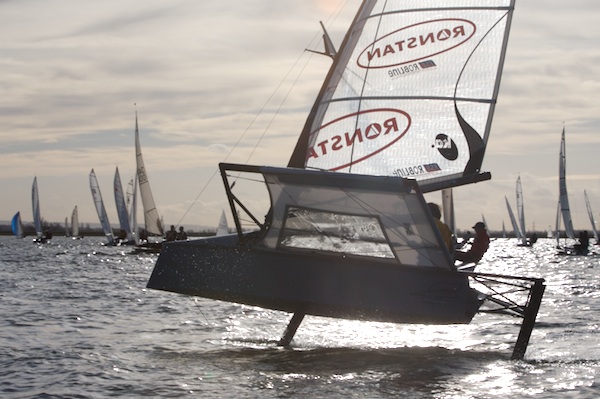
© www.ianroman.com

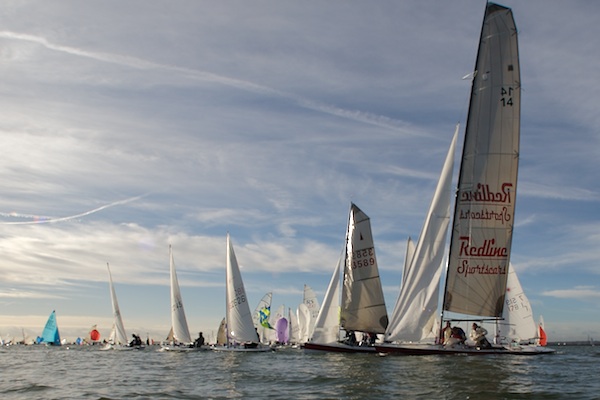 The second edition of the SailJuice Global Warm-up brings together four of the biggest winter handicap racing events into a unified series, to find out just who is tough enough to race their way through the brutal cold of a British winter. Earlier this year competitors battled their way through the first ever Global Warm-up, and this winter's early snow hints at another tough challenge ahead....
The second edition of the SailJuice Global Warm-up brings together four of the biggest winter handicap racing events into a unified series, to find out just who is tough enough to race their way through the brutal cold of a British winter. Earlier this year competitors battled their way through the first ever Global Warm-up, and this winter's early snow hints at another tough challenge ahead....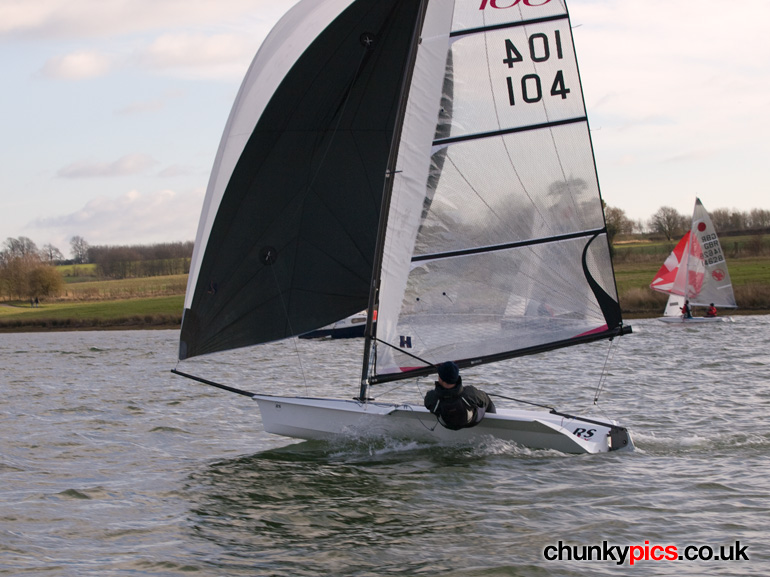 Where Peter Barton had capsized his way around the Bloody Mary three weeks earlier, the more moderate conditions suited his T-foiled Cherub to a T, with Barton and crew David Ellis winning both races of the Asymmetric fleet. After two events, victory at the Bloody Mary plus their 3rd at the Steve Nicholson keeps Andy Smith & Tim Needham's 505 in pole position, but just a point ahead of Barton's Cherub...
Where Peter Barton had capsized his way around the Bloody Mary three weeks earlier, the more moderate conditions suited his T-foiled Cherub to a T, with Barton and crew David Ellis winning both races of the Asymmetric fleet. After two events, victory at the Bloody Mary plus their 3rd at the Steve Nicholson keeps Andy Smith & Tim Needham's 505 in pole position, but just a point ahead of Barton's Cherub...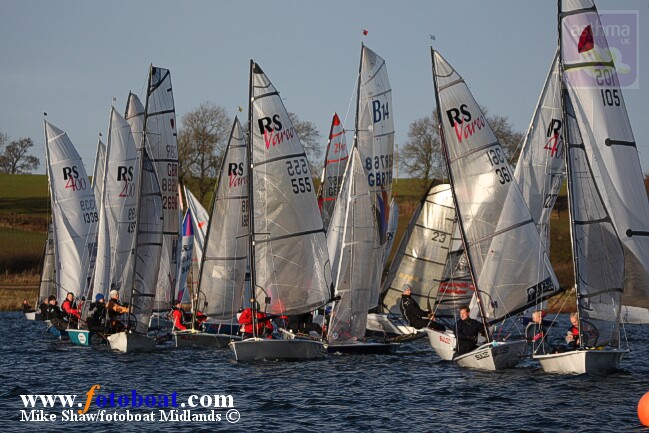 After a sub-zero Bloody Mary earlier this month, dinghy racers are getting ready for another cold battle this Saturday at the second event in the SailJuice Global Warm-Up, the Steve Nicholson Memorial Trophy at Northampton Sailing Club....
After a sub-zero Bloody Mary earlier this month, dinghy racers are getting ready for another cold battle this Saturday at the second event in the SailJuice Global Warm-Up, the Steve Nicholson Memorial Trophy at Northampton Sailing Club....